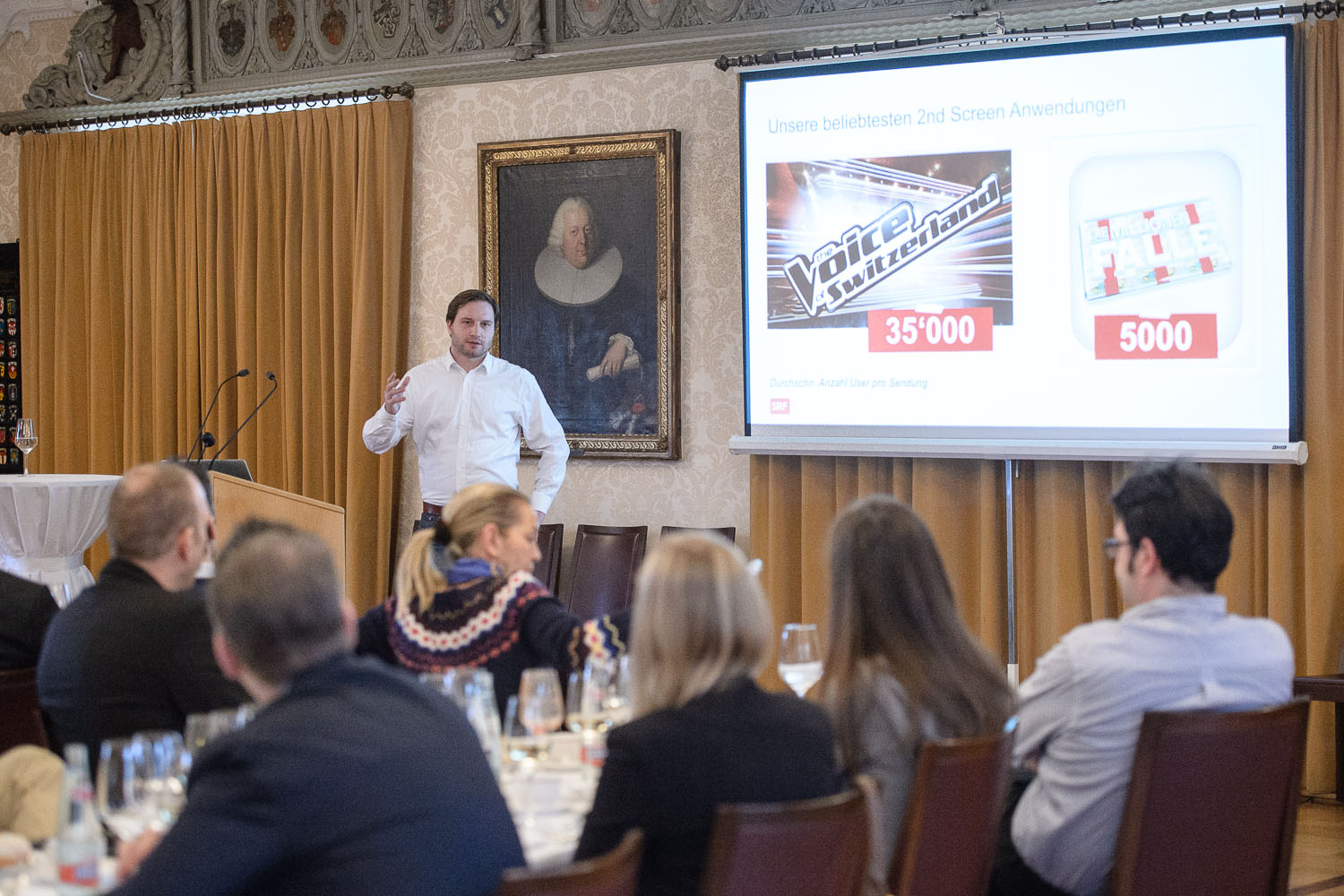SRF: More reach thanks to second-screen activities
SECOND SCREEN At the third insider lunch of the electronic media interest group IGEM on the topic of second screen and social media, SRF presented its experiences with its applications. Romain Haenni's presentation focused on the shows "Die Millionen-Falle" and "The Voice of Switzerland". Romain Haenni, SRF Multimedia Center presents the figures of social media users at the Zunfthaus zum Rüden [...]

Romain Haenni, SRF Multimedia Center presents the social media user figures at the Zunfthaus zum Rüden (Photo: Oscar Alessio)The most popular application was the music show "The Voice of Switzerland," which also achieved a correspondingly high Onair rating. An average of 35,000 people tuned in to each of these shows in the first quarter of 2013, and as many as 50,000 for the final three live shows.Jury member or quiz battleThere was also the opportunity to participate as a virtual jury member. These votes had no influence on the result. But those who took part were able to follow the trend among the online audience even before the result was announced.Of course, second-screen support is particularly interesting for a quiz. In the Million Trap, an average of 5,000 people logged on and then competed against each other.Promotion is crucialPromotion is particularly important for the success of second-screen applications. On November 11, 2013, for example, the number of players in the Million Trap increased by around 1,000 in one fell swoop after it was announced that 68 percent of all online players had survived the question. Since all players are logged in and have to provide various personal details, it is also possible to make any number of evaluations, such as the proportion of men or women who are still taking part or from which cantons the most players are taking part, and so on. Another particularly attractive feature was the opportunity to qualify as an online candidate for participation in the studio.Quiz programs suitable for second screenQuiz programs are particularly suitable for accompanying activities on the second screen, but they have to be based on simple question/answer pairs. In the case of live programs, the main focus is on discussing the current events. In the case of documentaries and fiction programs, on the other hand, the focus is on more detailed information about the program.Higher reach thanks to second screenFor SRF, the activities have translated into higher usage in the 15 to 49 age target group. Thus, reach increased by 45 percent and market share by 18 percent.Qualitatively, second-screen activities achieve greater viewer integration and better brand loyalty.App more popular than websiteIn terms of access technology, it has become apparent that the app is far more popular than the website. Whereas 65 percent initially participated via the website, this proportion very quickly dropped to 15 percent. According to Romain Haenni, the rest is done via an app, the development of which quickly costs about as much as a mid-range car.The personnel costs should also not be underestimated. For example, the broadcasts of "The Voice" were accompanied by five people and the "Millionfalle" by two people who sat directly in the broadcast management.App for each individual program?However, questions still arise for the future. For example, a broadcaster must consider whether it makes more sense to offer an adaptable app for the station or for each individual program. The station app is rather unfavorable for advertising, since it generates comparatively small user numbers.For SRF, there are also still some tricky definition questions due to the advertising ban on the Internet. On the other hand, in the case of purchased formats (such as Million Trap), the app is increasingly part of the license package.








